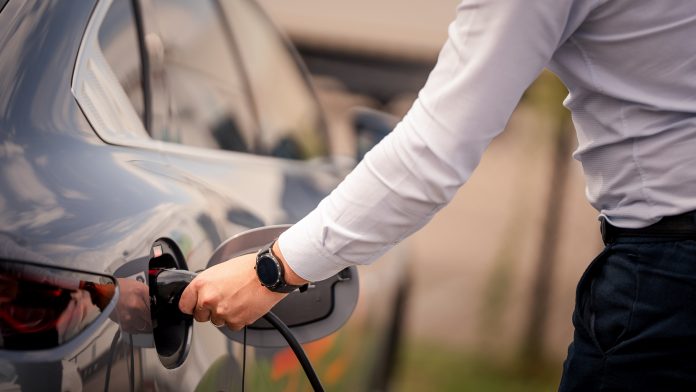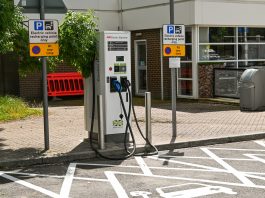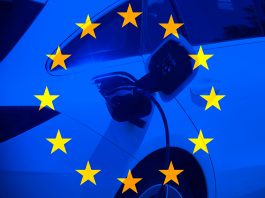Ben Thompson, Managing Director of EV and Energy at Radius, discusses EV charging and the options available to businesses for a more sustainable future.
The status of EV charging in the UK
Electric vehicle (EV) charging has recently been a hot topic. From government legislation such as Ultra Low Emission Zones (ULEZ) and questions around cost benefits to innovative methods of increasing electric vehicle (EV) charging infrastructure, there is no shortage of talking points regarding EVs in the UK.
Both governments and businesses are starting to realise that boosting EV adoption could be the answer to reducing emissions and reaching net zero targets. And with these lofty goals gaining momentum in 2024, now is the time for business leaders to consider EVs as a solution.
So, what is standing in the way of businesses and employees from fully embracing EVs? While EV batteries have become much more advanced, fears around running out of charge before drivers reach their destinations, also known as range anxiety, are just one of the barriers to EV adoption.
Recent news reporting that targets to deploy EV charge points near motorways have not been met has also raised concerns surrounding the UK charging infrastructure.
The reality is EV adoption is picking up pace. Businesses looking to meet their sustainability targets need to understand the needs of their employees when it comes to EV charging and what solutions are best for their organisation.
Business leaders may ask themselves how they know which charge points are best for them. With traditionally powered vehicles, how businesses should fuel up was relatively simple. But when it comes to EVs, there is a lot more to think about. The myriad of options available all have different costs, pros and cons.
Business leaders now have to consider an EV charging strategy, which they have never had to consider before. In reality, each fleet must deploy the above solutions in different quantities depending on their needs.
A deep dive into different EV charging solutions
From on-road charging to on-premises solutions, businesses have various options at their fingertips. Business leaders and fleet managers must understand the benefits and drawbacks of the myriad options to ensure they adopt the right EV charging strategy for their business.
Home charging
Charge points at home stand out as the option will likely become the most common place to charge EVs. This is no surprise, given the major cost benefits. Drivers can take advantage of lower energy costs by charging overnight – when the energy demand is much lower.
This also means drivers can wake up to a fully charged vehicle. So, instead of worrying about where they will next charge their car, they can simply drive to their destination without worrying about running out of charge.

Of course, homeowners who do not have a designated parking space may struggle to adopt these home charge points. However, there are ways to overcome this. For example, the government has implemented planning rules and regulations to ensure that every new home build can include an EV charger, making it much easier for these homeowners to adopt EVs.
Business leaders may ask themselves how to encourage EV adoption through these home charge points. One solution managers can turn to is reimbursing employees for the electricity used to charge EVs monthly, further incentivising EV adoption.
Using software such as the Radius Charge portal also means they can monitor costs to make sure they do not skyrocket. This method also means businesses save significantly more than employees using the pricier on-road chargers.
Workplace charging
Charge points at the workplace are another option that managers could consider. For employees, having another location to charge their vehicles may make them more likely to adopt EVs – especially as businesses can offer cheaper rates than on-road charge points.
When business leaders look at this option, the additional source of potential revenue for the business can also be a major benefit. As employees may pay to charge at work, this revenue can be reinvested into the business to further improve the EV charging solutions.
The charge points are also often easily scalable so that businesses can adopt at their own pace. Businesses can implement charge points in the most effective way for them and build on their workplace charge network over time.
Managers must know that investing in these workplace charge points does come with an initial upfront cost, which can be quite costly, especially when investing in DC units (fast charging).
However, businesses can lower these costs by taking advantage of grants. The Workplace Charging Scheme, for example, provides up to £350 per socket, which is a major contribution to workplace charging infrastructure.
On-road EV charging
On-road charging could include any EV charger on public property. It is useful for businesses that do not have the initial budgets to implement workplace charge points on-site but are still keen to implement EVs within their business fleet. With over 53,000 charge points across the UK, drivers can charge on the go almost wherever they are across the country.
The downside is that charging at these sites is often more expensive per mile. For instance, on-road charge points cost around 18p per mile – quite a jump from the much more affordable 2.5p per mile cost of charging at home.
On-road charge points can recharge vehicles quickly, and with increasing investment in rapid chargers, they will only get quicker.
However, charging on the road during work hours wastes employee time, which can be costly for businesses. For example, a delivery company may want to minimise drivers using these on-road chargers during work hours as it can lead to considerable time losses when they are carrying out deliveries.
Ideally, employees using EVs should consider on-road charging as one of their charging options, but not their primary port of call. Instead, to improve cost efficiency, business leaders should encourage their drivers to see on-road chargers as a quick top-up option between base charging locations.
What’s the solution?
The right EV charging solution will vary depending on the business. It can be an overwhelming decision, given that the options have pros and cons. However, there is no wrong way to charge vehicles. If you are making the steps to become more sustainable, you are already heading in the right direction.
Business leaders also shouldn’t forget the important role software solutions can provide. These bring together all of the diverse charging behaviours into a single place. Fleet managers can see the true and total cost of charge while also handling payments for the fleet managers.
Speaking to experts in EVs and charging can be a major help when deciding on EV charge points. They can ensure successful EV adoption by providing guidance that supports business-specific requirements and advising on the best software solutions to help manage their EV charge points.
In action
DG Group, the largest taxi operator in the East Midlands, is just one example of a company that has successfully implemented its EV charge strategy. It saw the need for DC rapid chargers for its large fleet to improve its depot charging capacity and reduce overall charging time, making the most of capacity.
The company partnered with EV charge experts Radius, who supported its move to EVs by supplying it with rapid charge points tailored to its business needs. Having support from experts from beginning to end meant the business could find the correct solution tailored to its needs and access guidance throughout the journey.
What’s next?
EV adoption is happening now. The EV charging infrastructure will only improve to keep up with this rising demand for EVs.
Now is the time for businesses to look at how they will support the adoption of EVs in their fleets and among employees.
Business leaders should not be worried about EVs and the feasibility of EV charging. Instead, they should embrace the opportunities these sustainability vehicles can provide to save money – and reach the all-important net-zero targets.









